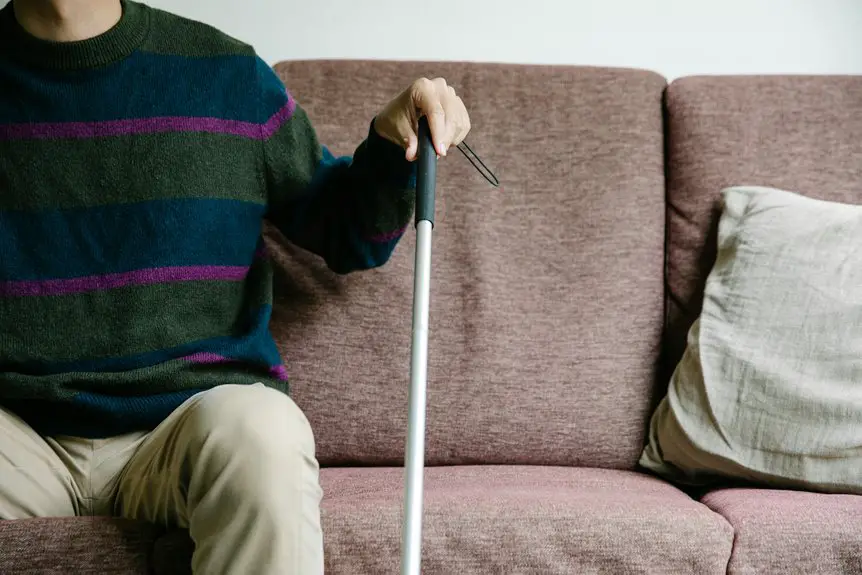You’ll find polypropylene fabric is lightweight, moisture-resistant, and strong due to its rigid molecular structure, making it great for activewear and bags. Polyethylene fabric offers more flexibility and toughness, ideal for tarps and heavy-duty covers. Both differ in durability, chemical makeup, and cost—polypropylene is usually cheaper, while polyethylene is more recyclable. If you want to match your project’s needs precisely, understanding these distinct features will guide you toward the best choice.
Table of Contents
Key Takeaways
- Polypropylene fabric is lightweight, moisture-resistant, and chemically resistant, while polyethylene fabric is tougher and highly water-resistant.
- Polypropylene offers higher tensile strength and abrasion resistance; polyethylene provides greater flexibility and impact resistance.
- Polypropylene is commonly used in activewear and shopping bags; polyethylene suits tarps, protective covers, and heavy-duty packaging.
- Polypropylene is more affordable and widely available compared to the pricier and less common polyethylene fabric.
- Polyethylene (especially HDPE) is easier to recycle, whereas polypropylene decomposes slowly and has a higher environmental persistence.
Chemical Composition and Structure
Understanding the chemical composition and structure of polypropylene and polyethylene helps you grasp why they behave differently.
Polypropylene is a polymer made from propylene monomers, featuring a methyl group attached to every other carbon atom in its backbone. This side group creates a more rigid, crystalline structure, influencing its strength and resistance to heat.
On the other hand, polyethylene consists of repeating ethylene monomers with a simpler chemical structure, just carbon and hydrogen atoms arranged in a linear or branched chain. This simplicity gives polyethylene more flexibility and varying densities, depending on how the chains are arranged.
When you compare the two, polypropylene’s additional methyl group makes it stiffer and less permeable, while polyethylene’s varied branching impacts its softness and toughness.
These structural differences define how each fabric performs in different applications.
Physical Properties and Durability
While both polypropylene and polyethylene offer valuable qualities, their physical properties and durability set them apart in practical use. You’ll find polypropylene boasts higher tensile strength and better abrasion resistance, making it sturdier under stress. Polyethylene, on the other hand, excels in impact resistance and flexibility, which helps it absorb shocks without cracking.
| Property | Polypropylene | Polyethylene |
|---|---|---|
| Tensile Strength | High | Moderate |
| Abrasion Resistance | Excellent | Good |
| Impact Resistance | Moderate | High |
| Flexibility | Lower | Higher |
Knowing these differences helps you pick the right fabric based on how tough or flexible you need your material to be.
Common Applications and Uses
Because polypropylene and polyethylene each possess unique strengths, you’ll find them suited to different applications.
Polypropylene fabric is lightweight, moisture-resistant, and has excellent chemical resistance, making it ideal for activewear, reusable shopping bags, and upholstery. You’ll also see it in outdoor gear and medical textiles where durability and comfort matter.
On the other hand, polyethylene fabric excels in toughness and water resistance, so it’s commonly used in tarps, protective covers, and heavy-duty packaging. If you need a fabric that withstands harsh conditions while remaining flexible, polyethylene is a solid choice.
Understanding these differences helps you pick the right fabric based on your project’s needs, whether it’s for clothing, industrial use, or everyday items.
Environmental Impact and Recyclability
Although both polypropylene and polyethylene are widely used, their environmental impact and recyclability vary considerably.
You’ll find that polypropylene is lightweight and resistant to many chemicals, which helps reduce waste during production. However, it can take hundreds of years to decompose in landfills.
Polyethylene, especially high-density polyethylene (HDPE), is one of the most recycled plastics worldwide. You can often recycle polyethylene products more easily, which helps lower environmental harm.
Both materials are derived from fossil fuels, so their production contributes to carbon emissions.
To minimize your environmental footprint, look for fabrics made from recycled polypropylene or polyethylene and guarantee proper recycling after use. Choosing products designed for recyclability helps you support a more sustainable lifecycle for these fabrics.
Cost and Availability Considerations
When you shop for polypropylene or polyethylene fabrics, you’ll notice differences in cost and availability that can affect your choices.
Polypropylene fabric tends to be more affordable due to its widespread production and lower manufacturing costs. It’s commonly used in packaging, upholstery, and activewear, which keeps its market supply steady and prices competitive.
Polypropylene fabric is cost-effective and widely available thanks to broad production and diverse uses.
Polyethylene fabric, especially high-density polyethylene (HDPE), can be pricier because it’s less commonly used in textiles and more in industrial applications like geotextiles and protective coverings. Availability of polyethylene fabric may be limited depending on your location and supplier.
If budget and easy access are priorities, polypropylene is often your best bet. However, if you need specific properties that polyethylene offers, be prepared for a higher cost and potential sourcing challenges.
Frequently Asked Questions
Can Polypropylene and Polyethylene Fabrics Be Dyed Easily?
You can’t dye polypropylene fabric easily because it’s hydrophobic and resists most dyes. Polyethylene also resists dyeing, but with special techniques, you can add color. So, expect challenges when dyeing either fabric.
Which Fabric Is Better for Moisture-Wicking Clothing?
If you love feeling like a soggy sponge, stick with polyethylene. But if you want to actually stay dry, polypropylene’s moisture-wicking powers will keep sweat off your skin, letting you conquer workouts without the swamp suit.
How Do These Fabrics Perform in Extreme Temperatures?
You’ll find polypropylene handles extreme heat better, resisting melting up to about 320°F, while polyethylene tends to soften sooner. For cold, both insulate well, but polypropylene’s moisture resistance keeps you drier and warmer.
Are There Any Health Concerns With Skin Contact?
Imagine smooth comfort versus mild irritation: you generally won’t face health concerns touching polypropylene or polyethylene fabrics. Both are safe, but if you have sensitive skin, you might notice slight irritation. Always test first!
Can These Fabrics Be Blended With Natural Fibers?
Yes, you can blend polypropylene and polyethylene with natural fibers like cotton or wool. Doing so enhances durability and moisture resistance while keeping natural comfort, giving you versatile fabrics suited for various uses and improved performance.
- Tetron Fabric for Marine Applications: Durability and Use Cases - June 18, 2025
- Tetron Fabric for Outdoor Furniture: Weather Resistance and Care - June 18, 2025
- Tetron Fabric for Wall Coverings: Style and Application Tips - June 18, 2025







